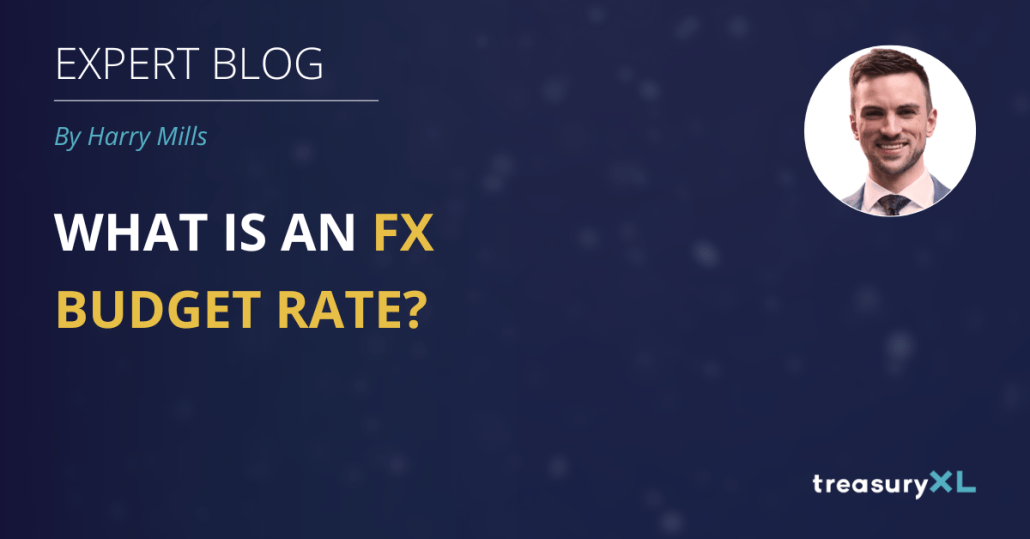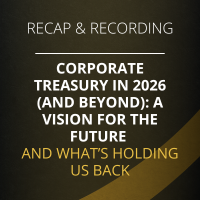There’s a lot of talk about ‘budget rates’ in foreign exchange risk management – a route-one approach for a lot of FX salespeople is to ask “What’s your budget rate?” and then seek to offer to protect that level for the month, quarter, year etc. But it is important and there should be some science in producing it.
This article will explain what a budget rate is and how to calculate one that makes sense for your business. A web search on this topic will give you all sorts of bad advice, so we’ll seek to give you something actionable and useful!
What is an FX Budget Rate?
Whether they know it or not, every business that trades internationally has some rate(s) of exchange that converts their non-domestic currency cash flows (or assets and/or liabilities) back to the home currency. Optimising these rates is the objective!
A budget FX rate is not just a number in a spreadsheet, it’s a predetermined exchange rate used to create a budget and plan the company’s financial forecast. This exchange rate is important as it drives planning and decision-making, and is used in the price-setting stage, to set targets, to calculate commission plans etc.
The budget rate may well be different to the pricing rate, perhaps with the budget level being more conservative, and the pricing level being more responsive to market changes and competitive pricing initiatives.
Let’s take an example of a UK company that imports widgets from China in US dollars. They set a budget rate of GBP/USD 1.1800 for the year ahead, meaning their forecasts are based on their import costs in dollars being bought at £1=$1.18. But they dynamically set prices each month based on the prevailing spot FX rate.
How do companies set FX Budget Rates?
There are several ways of doing this, good and bad, so let’s have a look:
- Prevailing spot rate – this is unbiased, but the spot rate will move across the next period, so this is not a recommended method.
- Prevailing forward rate – this is the achievable hedging rate, so it’s a preferred method if you hedge against it, otherwise it mightn’t leave enough headroom.
- Prior period average rate – this intuitively makes sense, but it doesn’t help you to predict the future or to protect your business. We don’t advise this.
- Market FX forecasts – this is a fool’s errand. Never do this – ever! Banks and analysts do not know where the market is going, so never use forecasts for planning.
- Off-market rate – this is typically say 5% or 10%, or perhaps 1 or 2 standard deviations away from the Spot, Forward, or period Average rate. We recommend this.
- Carry over the same rate – this may or may not be useful, depending on how close or far this rate is to reality, how competitive your market is, and other factors.
Like with most things, it’s horses for courses – you understand your business better than anyone else, so you should have an instinctive response to what feels best and which method will be most appropriate.
Our advice is to check if the proposed budget rate is:
- Realistic and attainable – don’t set yourself up for failure!
- Impartial and unbiased – don’t use opinions or forecasts!
- Stable and consistent – don’t drastically change it each year
Why are FX Budget Rates important?
Ultimately, this is about planning your business effectively and setting yourself up for success, not failure. The exchange rates you choose to use to convert your expected costs and/or revenues from overseas supply chains or customers will drive your financial year budget – simply, if you input an unachievable exchange rate, you won’t deliver the results you’re aiming for!
- Performance: You can use the budget rate as a performance benchmark, observing your actual FX rates vs this level as a barometer of success.
- Hedging: You can hedge to protect your budget rate, reducing currency risk that might otherwise threaten your budgeted financial performance.
- Visibility: With accurate (and, arguably, conservative) forecasts, you will gain visibility of future cash flows and financial performance. You will also gain credibility with senior stakeholders and can proactively manage resources.
What might “off-market” rate setting look like?
This is the practice of using an exchange rate deliberately different from the current market rate, usually with a set percentage buffer to add headroom.
Instead of just using, say, +/-10%, we suggest using standard deviations instead as it allows you to use a statically defined range based on the market’s typical price fluctuations. Basically, we’re using the market’s real (but historical) behaviour to give a rate(s) at a determined confidence level.
+/- 1 standard deviation will accommodate 68% of the expected fluctuations – you can be more conservative by using +/- 2, which would factor in 95% of expected price movements.
The chart below shows you what +/- 1 standard deviation in GBP/USD looks like going out to December 2025.
Fail to plan; plan to fail!
This doesn’t have to be a long or complex process, and you can outsource it to someone with the relevant knowledge and experience, but it’s certainly something that you should pay attention to and establish a level that you can be assured is realistic, attainable, impartial, unbiased, stable, and consistent. Those words again!
Get in touch with treasuryXL expert Harry Mills for additional information on over-hedging in FX management.
Harry Mills, Founder at Oku Markets












